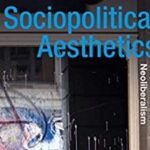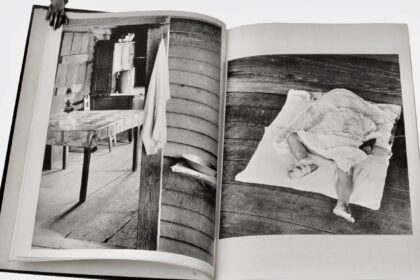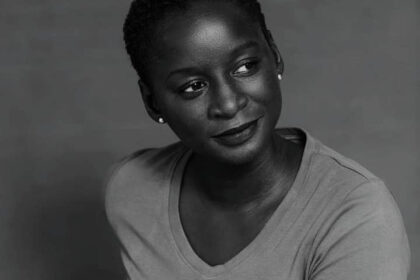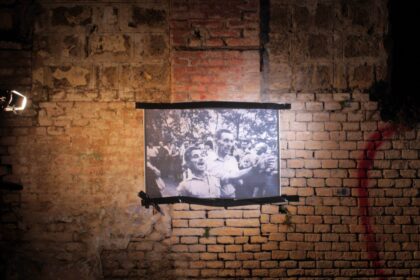Review of Laura Raicovich, Culture Strike: Art and Museums in an Age of Protest (Verso 2021)
Kristina Stahl
Encapsulating the tangible bits of life that make up culture, there is no space more critical to how we see ourselves–and the “best” of what we’ve accomplished–than the museum. While museums are often thought of as reflections of a cultures’ past, they also actively shape its present and future. In other words, museums don’t just document what already exists, but by displaying what does exist, they create and recreate culture. Visitors’ expectations and preconceived notions of reality are affirmed or challenged by what they experience in the museum space. Like universities, museums can radically revolutionize thought processes or open minds to something new. However, museums can also provide a kind of immediate accessibility to new knowledge that is often absent from the university space. Culture Strike: Art and Museums in an Age of Protest, written by author and curator Laura Raicovich, explores a range of recent controversies unfolding in the context of museums and other cultural institutions. Raicovich, who has been a museum professional for many years, provides a timely analysis of institutional activism, bringing her first-hand expertise of curatorial work to her book. Her involvement in the discourse on socially-engaged art and museum politics is apparent; she has contributed to Hyperallergic since 2019 and has given lectures on social justice in the art world since 2013.
Raicovich’s professional experience might boost her credibility for some readers, as she has spent a lot of time in a variety of arts institutions and is, unselfishly, arguing for the breaking down and restructuring of her own field. To others, however, her close ties to the Guggenheim and Creative Time might be off-putting, as she has long been a part of the very art world she condemns in Culture Strike as elitist. Brilliantly weaving together the words of community activists with Raicovich’s personal experience leading the Queens Museum through the 2016 presidential election, Culture Strike calls for a radical reimagining of the museum by examining the ways in which public museums have been, and should be, grappling with protest. In the first pages, Raicovich delves into the discourse surrounding the contributions of the Sackler family, both to the art world and the opioid epidemic, and refuses to let us accept the conventional idea of the museum as a “neutral” space.
The Sackler family, uber-wealthy owners of Purdue Pharma, have made major donations to prominent museums across the U.S. using profits generated from the painkiller Oxycontin, a major player in the massive public health crisis that is opioid addiction. Raicovich argues that the art cannot be separated from the wing in which it sits, especially when that wing was bought with dirty money. Raicovich believes that the public perception of museum donors as rich, but not necessarily viciously anti-progressive, is misguided and the open-minded, education-forward messaging of many museums further obscures their ties. The “ways cultural spaces are funded,” Raicovich writes, are “among the thorniest aspects of undoing unjust ideological frameworks embedded in museums, in part because the power relationships embedded in them–especially in the United States–mirrors the yawning gap in wealth and privilege between an increasingly exclusive minority and the vast majority of society” (93). Due to their dependence on philanthropy from individual donors, Raicovich argues, museums are more accurately understood as representing the cultural influence of neoliberal wealth than as institutions devoted to nurturing creative genius.
Culture Strike destabilizes the idea of the “general audience,” raising questions about who the museum is for and whom it leaves out. Not only do institutions curate with a particular patron in mind, which universalizes white experience and systematically excludes Black and Indigenous narratives, but, as Raicovich writes, they “present themselves as monolithic, speaking in one institutional voice” when in reality, they are “comprised of many dozens (or hundreds) of people, with their own ideas and opinions about the many aspects of the work they do collectively” (61). This disregard for the multiplicity of voices within the museum, and focus on the binary of right and wrong, helps reinforce the museum’s image as an objective arbitrar of cultural excellence. Liberally citing art magazines, critical race theorists, and museum professionals, Culture Strike explores the colonial origins, facade of progressivism, and white supremacist roots of the museum as an institution. It amplifies the voices of museum staff and community organizers including LaTanya S. Autry, curator and co-director of #MuseumsAreNotNeutral, Nan Golden, artist and founder of PAIN, and Maud Page, director of collections at the Art Gallery of New South Wales, who have been able to strategically make concrete changes within their institutions.
Raicovich simultaneously calls-out and calls-in racist curatorial and philanthropic practices through a number of case studies. She analyzes the ways in which museums uphold and operate within imperial epistemologies and how they are also the perfect places to begin to dismantle them. Pointing to the 1969 Metropolitan Museum of Art’s “Harlem on My Mind” exhibit, which excluded Black art and artists from an exhibit about a Black community, she calls attention to articulations of white supremacy in cultural institutions and ways in which (white) curators continually uphold exclusionary practices, constantly patronizing, othering, and “whitesplaining.” Raicovich reflects on the disastrous results of misguided “DEI” goals, using the Met’s “Harlem on My Mind” exhibit as an example of how even world-renowned organizations still utterly fail at meeting their purported objectives.
As further evidence, Raicovich offers the controversial display of Dana Schutz’s Open Casket at the 2017 Whitney Biennial. The piece, a painting of Emmett Till’s disfigured body by white artist Schutz, was insensitive to Black viewers, exploiting the violent death of a young Black boy for spectacle. At the center of the controversy: whether the subject matter was Schutz’s to depict. Raicovich situates the work within the context of the killings of Trayvon Martin, Eric Garner, Tamir Rice, and Michael Brown, as evidence of a continued lack of sensitivity, community care, and recognition of white voyeurism. Advancing a further criticism of the very structure of cultural institutions, Raicovich crucially asks, “how is the ideology embedded in the Whitney and the structures that enable the biennial revealed via the display of Schutz’s work, and amid the subsequent uproar?”
Raicovich also discusses the Walker Art Center’s response to the outrage produced by Sam Durant’s installation Scaffold (2012), after it was installed in the Center’s Sculpture Garden, and compares it to the lack of response by the Whitney. After Durant’s work was installed, Indigenous leaders and activists raised concerns about how the piece’s meaning, which gives form to the government-sanctioned mass execution of Dakota men in 1862, would impact and hurt their communities in the present. The Walker and Durant’s immediate acknowledgement and response, tearing down Scaffold and, critically, giving the intellectual rights to the Dakota, set it apart from institutions that allow artists, donors, or commercial value to limit their responses to criticism. Raicovich highlights this controversy to point out a successful approach to repairing relationships with communities museums have excluded and to signal her continued hope for the future of the field of which she has long been a part.
Setting the stage for the rest of the book, aptly titled “Going Forward,” she posits that slowing down and avoiding the guise of neutrality is the only path forward for museums. I wonder how Raicovich might have been able to further engage with the voices of museums’ harshest critics, such as Strike MoMA and the Gulf Labor Coalition. I think the book could have benefited from the first-hand perspectives of these activists, especially as, at certain times, I found Raicovich difficult to trust. Her idealism and reluctance to completely let go of an art world tied to capitalism, despite clearly articulating its condemning flaws, can feel hypocritical rather than optimistic. Although it is clear that Raicovich castigates the museum for its lack of commitment to social change, it seems as though she has not moved on—sometimes offering vague, idealistic statements to avoid admitting the institutions she loves are further gone than she thought. It may have proven worthwhile to make room for more voices of BIPOC museum workers, those who have experienced the pitfalls she recognizes firsthand, as a means of focusing on their concrete pleas, rather than what those at the top believe that they need.
Despite her reckless optimism, Raicovich successfully argues that one thing is clear: museum leaders need to radically change the ways they go about building and rebuilding exhibitions. Stepping away from their roots in white supremacy, museums need to pause, ask uncomfortable questions, reassess funding sources, and take risks with inventive strategies. Mission statements, land acknowledgments, and Instagram posts are shallow and performative without efforts to listen to the cries from their communities—for livable wages, BIPOC leadership, and community care—and take action. I wholeheartedly recommend Culture Strike, especially to those who have a background in art or social justice and are looking for a motivational rallying cry in difficult times.
Kristina Stahl is an undergraduate student at the University of California, San Diego pursuing a Bachelor’s degree in both Art History and Studio Art. Currently, she is focused on socially-engaged art as well as Indigenous art of the Pacific Northwest Coast.











